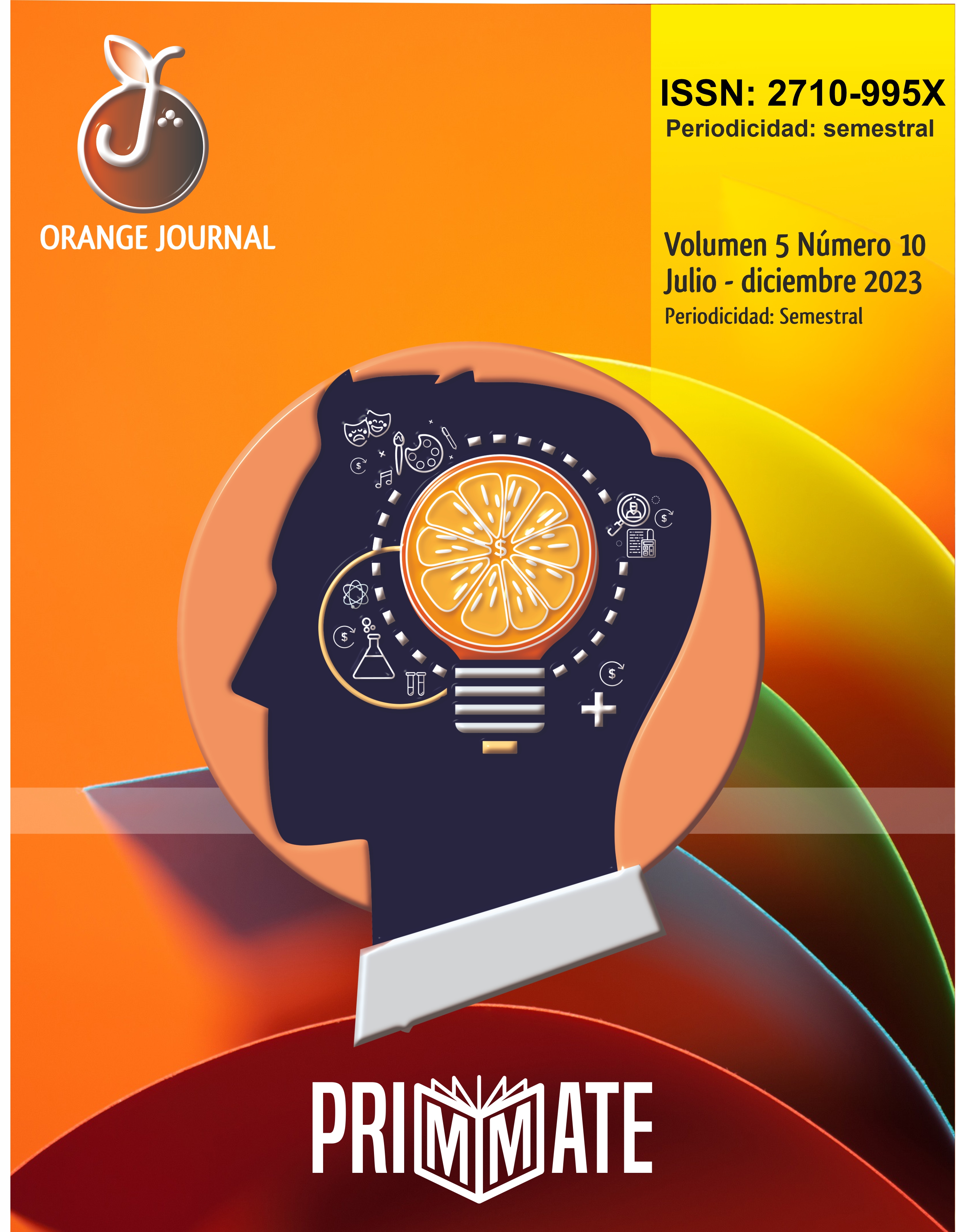Prevalence of Hyperlipidaemias in the Area of Health
DOI:
https://doi.org/10.46502/issn.2710-995X/2023.10.05Keywords:
hyperlipidaemias, dyslipidaemias, hypertriglyceridemias, hypercholesterolemiasAbstract
The hyperlipidaemias has become a new epidemic that affects people of both sexes, although they are several the factors that promote their development the overweight are one of the most important. Considering these antecedents, the objective of our work was to evaluate the behavior of the hyperlipidaemias in the Santiago of Cuba. A descriptive and retrospective research was carried out to facilitate the characterization of the prevalence of Hyperlipidaemias and to determine the possible risks of developing predetermined illnesses associated with types of dyslipidaemias. A group of 3 275 subjects was analyzed, of which 73.22% were men. The 45.80% of the patients studied proved to be carriers of at least one type of Hyperlipidaemia, the majority being men (72.20%). The hypercholesterolemias showed the highest prevalence (39.72%), followed by the hypertriglyceridemias (32.98%) and the combined hyperlipidaemias (27.30%). In relation to possible illness risks, the possibility of atherosclerosis proved to be greater and relating to its clinical manifestations, cardiovascular disease proved to have the highest risk potential, with a value of 57.02% of the studied patients being at risk. The illness that showed least risk for the analyzed group was pancreatitis.
Downloads
References
Anastasopoulou, C., Panchal, G., & Amin, P. (2021). Polygenic Hypercholesterolemia. eMedicine Retrieved from Medscape. https://emedicine.medscape.com/article/121424-overview?form=fpf#showall
Asamblea General de Asociación Médica Mundial. (2004). Declaración de Helsinki: Principios éticos para las investigaciones médicas en seres humanos. Tokio. http://www.redsamid.net/archivos/201606/2013-declaracion-helsinki-brasil.pdf
Cardella, H. (1999). Bioquimica Médica Tomo III; Metabolismo Intermediario y su regulación. La Habana: Editorial Ciencias Médicas.
Farreras, R. (2000). Medicina Interna decimocuarta edición. Madrid España: Ediciones Harcourt.
Formisano, E, Pasta, A, Cremonini, AL, Favari, E., Ronca, A., Carbone, F., & Pisciotta, L. (2020). Efficacy of Nutraceutical Combination of Monacolin K, Berberine, and Silymarin on Lipid Profile and PCSK9 Plasma Level in a Cohort of Hypercholesterolemic Patients. J Med Food., 23(6), 658-666. Doi: 10.1089/jmf.2019.0168
Gidding, S. S., Ann Champagne, M., de Ferranti, S. D., Defesche, J., Ito, M. K., Knowles, J. W., & Wierzbicki, A. S. (2015). The agenda for familial hypercholesterolemia: a scientific statement from the American Heart Association. Circulation, 132(22), 2167-2192.
Giusepe, R. (2001). Detección valoración y tratamiento de la hipercolesterolemia en adultos. Rev. Panam Sal Pub, 9(5), 338-344.
Davidson, M-H., & Pallavi Pradeep, P. (2023). Dislipidemia. Manual Merck. Capítulo Hiperlipidemia. Manual Merck online. https://acortar.link/i8UiE1
Jerez Fernández, C., Irribarren Bravo, J., Diaz Urbina, F., Kusanovic Blanco, J., & Araya Zumaran, B. (2023). Mecanismos fisiopatologicos de la dislipidemia. NOVA: Publicación Científica en Ciencias Biomédicas, 21(40).
Kasper, D. L., Braunwald, E., Fauci, A. S., Stephen, L. H. D. L., Longo, J. L. J., & Isselbacher, K. J. (2005) Harrison Online, principios de Medicina Interna. 16a edición. México DF Editorial Mcgraw-Hill Interamericana. Cap, 349, 158-219.
Ministerio de Salud Pública. (2021). Dirección Nacional de Registros Médicos y Estadísticas de Salud. Anuario Estadistico de Salud. https://temas.sld.cu/estadisticassalud/2022/10/18/anuario-estadistico-de-salud-2021/
Nasiff, A., Klaindorff, B., Jiménez, R., & Baldor, F. (1992). Prevalencia de hipercolesterolemia en la población adulta del municipio Habana Vieja. Rev. cuba. med. gen. Integr, 8(4), 293-306.
Nasiff Hadad, A., Pérez Pérez, L. M., Campos Nodarse, A., Dueñas Herrera, A., Espinosa Brito, A., Herrera González, A., ... & Calderín Bouza, R. O. (2006). Primer consenso nacional de dislipoproteinemias: Guía para la prevención, detección, diagnóstico y tratamiento. Rev Cubana Endocrinol. Suplemento de Endocrinología, 17(4), 1-31.
OMS (2000). Guías Operacionales para Comité de Ética que Evalúan investigación Biomédica. México. 1-3. https://apps.who.int/iris/handle/10665/66641
Pérez de Corcho Rodriguez, M., Suarez Hernandez, M., & Espada Valdez, E. (2007). Caracterización de los fallecidos con arterosclerosis en el 2006. Rev médica Ciego (13/02/07). http://www.bvs.sld.cu/revistas/mciego/vol13_02_07/articulos/a9_v13_0207.html
Ruiz Moré, A., Odelín Villasana, L., Reyes Jiménez, S., Burgos Ballate, D., & Sarduy Santana, J. (2009). Niveles de Colesterol en la región Centro-Norte de Cuba. Rev Mex Patol Clin, 56(I), 18-26.
Santovito, D., Marcantonio, P., Mastroiacovo, D., & Cipollone, F. (2020). High dose rosuvastatin increases ABCA1 transporter in human atherosclerotic plaques in a cholesterol-independent fashion. Int J Cardiol., 299, 249-253. Doi: 10.1016/j. ijcard.2019.07.094
Roca, R., Smith, V., Paz, E., Losada. J., Serret, B., Llamos, N., Toirac, E., Noya, M.E., Morales, R., & Cardona, D. (2002). Temas de Medicina Interna. Libro Roca. Vol. II. 4ta Ed. La Habana. ISBN 959-7132-84-2.
Vaziri, N.D. (2016). Disorders of lipid metabolism in nephrotic syndrome: mechanisms and consequences. Kidney Int., 90(1), 41-52. Doi: 10.1016/j.kint.2016.02.026
WHO. (2014). Global Status Report on Non communicable Diseases 2014. Geneva World Heal Organ. http://apps.who.int/medicinedocs/es/m/abstract/ Js21756en/
Published
How to Cite
Issue
Section
License
Copyright (c) 2024 Orange Journal

This work is licensed under a Creative Commons Attribution 4.0 International License.










